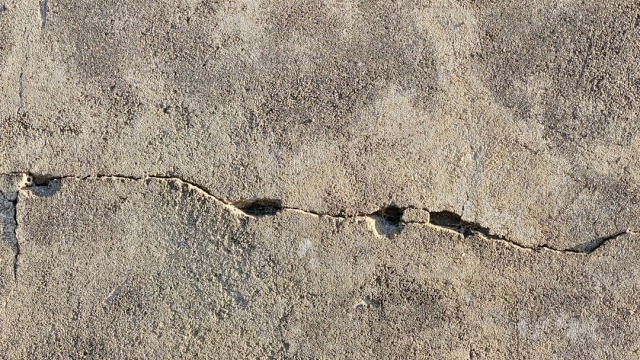From Pipes to Pits: Unveiling the Secrets of Plumbing and Septic Systems
Plumbing and septic systems are often overlooked and taken for granted in our daily lives. We turn on the faucet, flush the toilet, and expect water to flow effortlessly in and out of our homes. But have you ever wondered about the intricate network of pipes and pits that make it all possible? In this article, we will peel back the layers and unveil the secrets behind plumbing and septic systems. From the origins of plumbing to the functions of septic systems, get ready to dive into a world where pipes and pits work tirelessly to keep our homes running smoothly. So, put on your metaphorical overalls and join us on this fascinating exploration into the hidden marvels of plumbing and septic systems.
The Basics of Plumbing
Plumbing is an essential system that ensures the proper flow of water in our homes and buildings. It involves a network of pipes and fixtures that connect various sources of water to different areas of a structure. The main objective of plumbing is to provide clean water for drinking, cooking, cleaning, and other everyday activities while also efficiently managing waste through drainage systems.
The plumbing system consists of two main parts: the supply system and the drainage system. The supply system is responsible for bringing fresh water into the building, while the drainage system takes care of removing wastewater and sewage.
In order to provide clean water, the supply system typically connects to a municipal water source or a well. From there, the water is distributed throughout the building using a complex network of pipes. These pipes are made from different materials such as copper, PVC, or PEX, depending on the specific requirements and building codes.
On the other hand, the drainage system collects wastewater from sinks, toilets, showers, and other fixtures. This system relies on gravity to ensure the smooth flow of wastewater into the main sewer line or a septic tank. To prevent any blockages or backups, drainage pipes are designed with traps and vents that allow air to circulate and keep the system running smoothly.
Understanding the basics of plumbing is crucial for homeowners as it helps them identify common issues such as leaks, clogs, or low water pressure. By having a good grasp of the system’s components and functions, individuals can effectively communicate with plumbing professionals and make informed decisions about repairs or upgrades.
In the following sections, we will delve deeper into the intricacies of plumbing and septic systems, exploring their maintenance, common problems, and eco-friendly solutions. Stay tuned to unravel the secrets behind these essential elements of our modern living.
Understanding Septic Systems
In order to fully comprehend the inner workings of plumbing and septic systems, it is essential to familiarize ourselves with the intricate details of septic systems. These systems play a crucial role in waste management, especially in areas where public sewage systems are absent or impractical.
Septic systems consist of several key components that work harmoniously to effectively treat and dispose of wastewater. The primary elements include the septic tank, drainfield, and the soil surrounding it.
The septic tank is a vital part of the system as it acts as a large underground storage container for household wastewater. This watertight tank is typically made of concrete, fiberglass, or plastic. As wastewater enters the septic tank, the solid waste separates from the liquid through a process known as sedimentation. The solids settle at the bottom of the tank where they are broken down by bacteria, while the lighter liquid waste floats to the top.
Once the wastewater is clarified, it flows out of the septic tank and enters the drainfield. The drainfield, also referred to as the leach field, is a network of perforated pipes buried in trenches. These pipes distribute the wastewater evenly throughout the drainfield, allowing it to seep into the surrounding soil.
By undergoing a natural filtration process, the soil acts as the final line of defense in purifying the wastewater. Microorganisms and soil bacteria further break down any remaining pathogens or pollutants, making the water safe to reenter the ecosystem.
Understanding how septic systems function is crucial for homeowners and communities relying on such systems for waste management. Proper maintenance and regular inspections are vital to ensure the longevity and effectiveness of these systems, ultimately contributing to a healthier and cleaner environment.
Remember, while it may not be the most glamorous subject, the secrets of plumbing and septic systems serve an essential purpose in our day-to-day lives.
Maintenance and Troubleshooting Tips
Regular maintenance is crucial for keeping your plumbing and septic systems in good working condition. By following these simple tips, you can prevent potential issues and ensure the longevity of your systems.
-
Inspect for Leaks: Check for any visible leaks in your plumbing system regularly. Look for dripping faucets, pooling water around pipes, or damp spots on walls or ceilings. Addressing leaks promptly can save you from major water damage and costly repairs.

-
Keep Drains Clean: To avoid clogs and backups in your plumbing system, it’s important to keep your drains clean. Use drain strainers to catch hair, debris, and food particles before they can cause blockages. Regularly flushing drains with hot water and a mixture of baking soda and vinegar can also help break down any buildup.
-
Septic System Maintenance: If you have a septic system, it’s essential to have it pumped regularly. The frequency of pumping depends on the size of your tank and the number of occupants in your household. Regular pumping prevents solids from building up and clogging the system, ensuring proper functioning and avoiding costly repairs.
Additionally, be mindful of the items you flush down the toilet or rinse down the drain. Avoid flushing non-biodegradable materials, oils, grease, feminine hygiene products, or excessive amounts of chemicals. These can disrupt the balance of bacteria in your septic tank and lead to system failure.
By following these easy maintenance and troubleshooting tips, you can keep your plumbing and septic systems running smoothly, helping you avoid major issues and costly repairs in the future.


